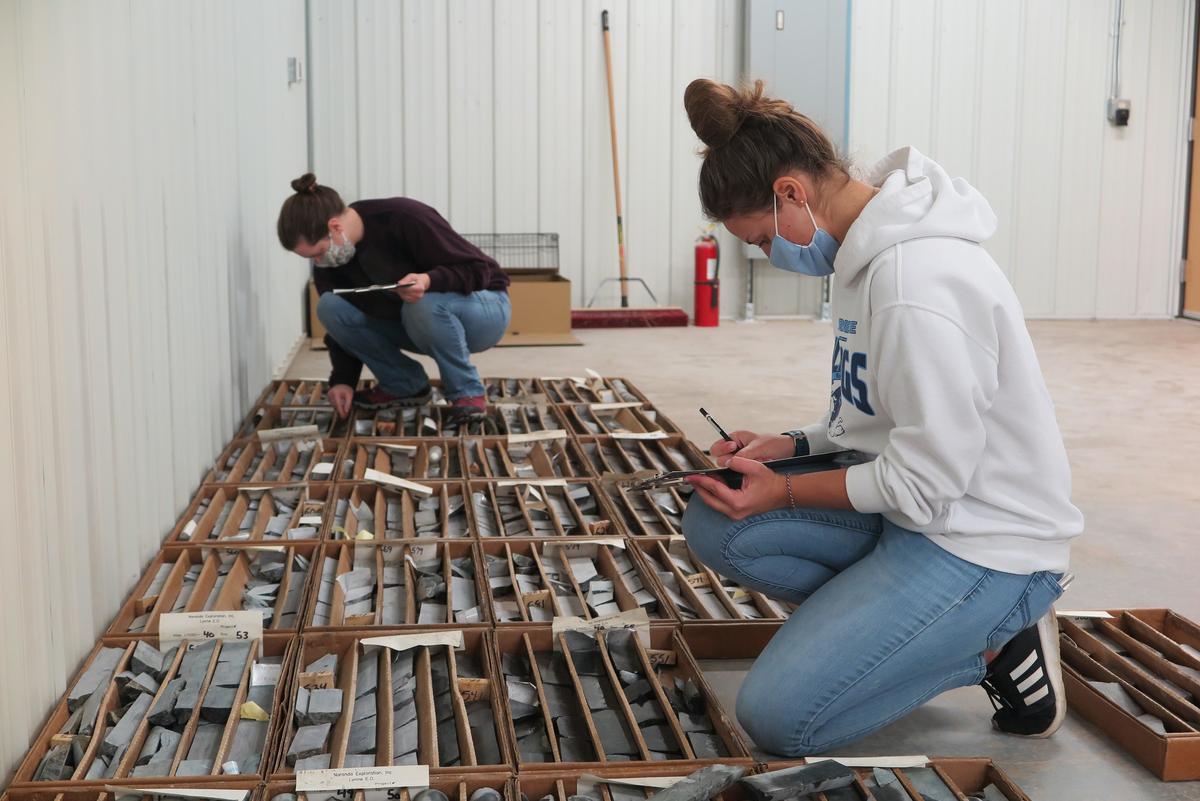Some 1.87 billion years ago, volcanic activity in north-central Wisconsin formed a unique mineral deposit that has piqued the interest of local geologists.
“The Lynne Deposit is different than other hydrothermal systems of the same era,” explained University of Wisconsin – Eau Claire Economic Geology Professor, Robert Lodge. “It has a lot of lead in it, but it might have formed in the right conditions to incorporate barium and indium, important minerals for technologies and U.S. defense.”
The only way to find out is to study drill core from the deposit.
But that opportunity nearly slipped away.
Back in the early 2000s, George Hudak (a former University of Wisconsin professor and now director of NRRI’s Minerals and Metallurgy group) got word that the core from the Lynne Deposit was destined for the dump. His conscience made him spring into action.
“I am passionate about drill core. To me, dumping core is like burning books,” said Hudak. “Getting the drill core out of the ground is a major investment. And once it’s gone, you’ll never get it back for future training, education and research opportunities.”
Drill core are long, cylindrical samples drilled from rocks that can be interpreted by geologists to gain better understanding of how the rocks, and their mineral resources, formed. And while mineral deposits are set in stone – literally – ongoing analyses of drill core provides new and ever-expanding insights to understanding geological systems.
Hudak knew he couldn’t save all the drill core from this hybrid zinc-lead-silver deposit, so he prioritized saving core from two perpendicular cross-sections through the deposit. Then he made a plan to get it to economic geology students for training and much needed study.
With the help of NRRI geology colleague Dean Peterson, 290 boxes of drill core were collected and stored at NRRI Duluth. Professor Lodge got some help and moved the collection to UW-Eau Claire in October 2020.
“This core represents an incredible opportunity for my undergraduate students,” said Lodge. “Lynne is a different-looking hydrothermal system, so it’s unique compared to other deposits in Wisconsin. The state had no drill core for this deposit.”
And while it’s very convenient to have the core right on campus, Lodge’s goal is to get it to the Wisconsin Geological Survey so that it’s accessible to other geologists, curators and librarians for broader distribution and analyses.
Currently, four University of Wisconsin undergraduate students have exploratory research underway with the Lynne Deposit drill core. Their work not only gives them experience that boosts their career opportunities but unearths – quite literally – how this deposit formed and its unique mineralization.
“This is applied geology,” said Lodge. “The students are learning core logging and data analysis skills useful in mineral exploration or environmental consulting. Because of this drill core work, they’ll come out as undergrads ready for work in the real world.”
